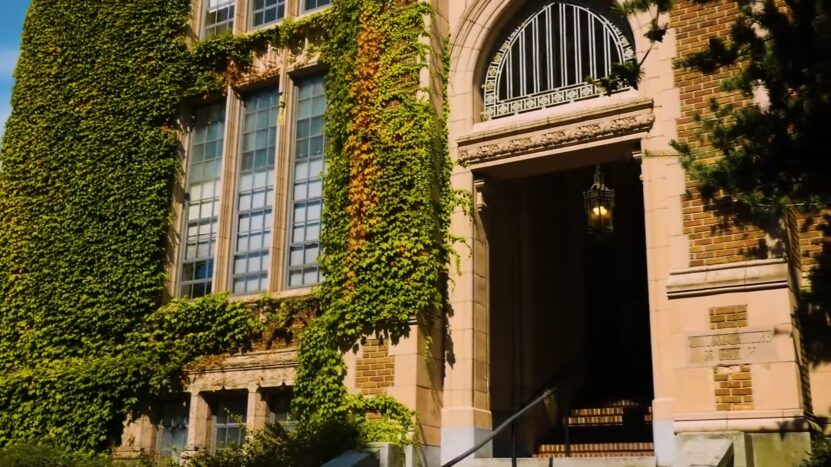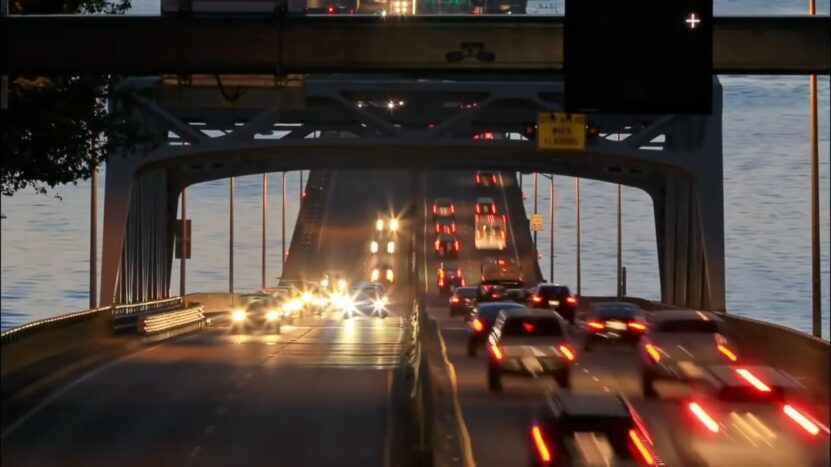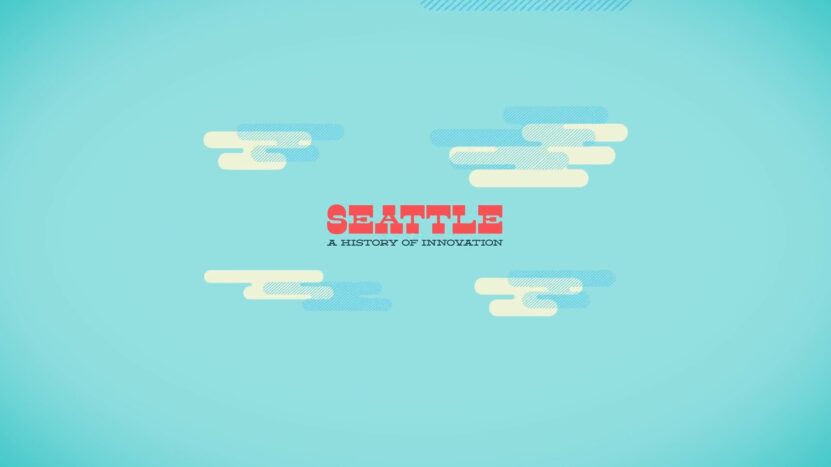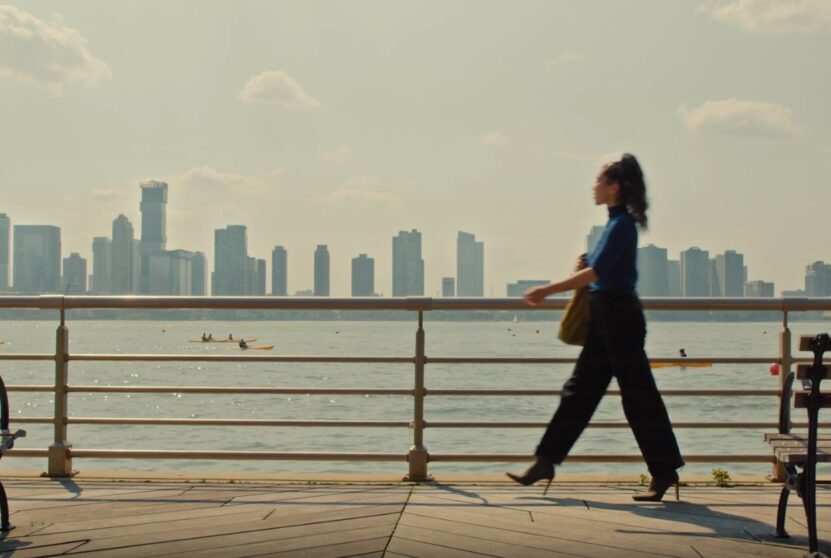Welcome to Seattle, the Emerald City, a jewel nestled in the Pacific Northwest of the United States. Known for its breathtaking natural beauty, innovative technology, and rich cultural history, Seattle has long captivated the hearts and minds of those who visit or call it home.
As the largest city in Washington state, it boasts an eclectic mix of urban excitement and serene tranquility that has inspired countless musicians, artists, entrepreneurs, and adventurers alike.
In this article, we will uncover the top 10 interesting Seattle facts that reveal the vibrant tapestry of this remarkable city.
Unraveling Seattle’s Academic Prowess: The Nation’s Most Educated City

Seattle has long been associated with innovation, creativity, and progress, so it should come as no surprise that it boasts an exceptionally educated populace. An impressive fact about Seattle is that over 50% of its residents aged 25 and older hold a college degree, making it the most educated city in the United States. This high level of academic achievement is not only a testament to the city’s commitment to education but also a driving force behind its thriving economy and vibrant cultural scene.
Several factors contribute to Seattle’s status as the nation’s most educated city. Firstly, the presence of top-tier universities in the region, such as the University of Washington and Seattle University, has created a rich academic environment. These institutions not only draw bright minds from around the globe but also encourage local residents to pursue higher education. This influx of talent has helped to establish the city as a center for research and innovation, attracting renowned faculty and spawning successful startups.
The highly educated population also contributes to the city’s rich cultural fabric, with an array of museums, galleries, theaters, and other cultural institutions that cater to and are supported by this knowledgeable community. This appreciation for the arts and culture, combined with the city’s innovative spirit, has fostered a thriving creative scene, nurturing local artists, musicians, and writers.
Embracing an Active Lifestyle: Seattle’s Remarkable Fitness Culture

Seattle’s reputation as one of America’s fittest cities is another fascinating aspect of this dynamic metropolis. For over two decades, Seattle has consistently ranked among the top 10 healthiest cities in the country, with its residents demonstrating a strong commitment to wellness and an affinity for outdoor activities. Rain or shine, the people of Seattle can be found engaging in various forms of exercise and adventure, surpassing the activity levels of the entire eastern seaboard and 40% of the southern United States.
The city’s remarkable fitness culture can be attributed to several factors. Firstly, Seattle’s stunning natural surroundings, encompassing everything from lush forests and pristine lakes to rugged mountains and breathtaking coastlines, provide a plethora of outdoor recreational opportunities. The region’s vast network of trails, parks, and green spaces beckon residents to partake in hiking, cycling, running, and other invigorating pursuits. Water-based activities, such as kayaking, paddleboarding, and sailing, are also popular among the locals, making the most of the city’s abundant waterways.
Another contributing factor to Seattle’s fitness culture is the city’s focus on promoting health and well-being. Numerous public initiatives, such as bike-friendly infrastructure, community fitness programs, and accessible parks, make it easier for residents to maintain an active lifestyle. Additionally, the city’s robust local food scene, characterized by an abundance of farm-to-table restaurants, farmers’ markets, and organic food retailers, supports a healthy diet for Seattleites.
Bridging the Waters: Seattle’s World-Class Floating Marvels

Among the many intriguing facts about Seattle is its exceptional collection of bridges, particularly its floating bridges. The city is home to two of the world’s longest floating bridges: the Murrow Bridge (officially named the Lacey V. Murrow Memorial Bridge) and the Evergreen Point Bridge (officially named the Governor Albert D. Rosellini Bridge). These engineering marvels have not only become iconic symbols of the city’s infrastructure but are also among the top Seattle tourist attractions.
The Evergreen Point Bridge, measuring a staggering 7,578 feet in length, holds the title as the world’s longest floating bridge. Connecting Seattle with the city of Bellevue across Lake Washington, this remarkable structure is a vital transportation link for the region. The Murrow Bridge, spanning 6,620 feet, is the second-longest floating bridge in the world. It also traverses Lake Washington, connecting Seattle to the nearby suburb of Mercer Island.
Floating bridges are unique engineering feats designed to span large bodies of water where traditional bridge construction methods may not be feasible or cost-effective. These bridges are constructed using large, watertight concrete pontoons that provide buoyancy and support the bridge’s roadway. The pontoons are anchored to the lakebed, allowing the bridge to remain stable even in the face of strong winds and currents.
The Birthplace of Giants: Seattle’s Legacy of Corporate Innovation

Seattle’s economic landscape is defined by its remarkable history of entrepreneurship and innovation. The city has given birth to six major American companies that have gone on to become household names not only in the United States but across the globe. Costco, Boeing, Amazon, Starbucks, Microsoft, and UPS all have their roots in Seattle, showcasing the city’s propensity for nurturing successful businesses that have a profound impact on various industries.
Costco, the multinational retail giant known for its warehouse-style stores and membership model, was founded in Seattle in 1983. Today, Costco has expanded its presence to numerous countries around the world and is considered one of the largest and most successful retail chains.
Boeing, the world’s largest aerospace company, was established in Seattle in 1916. It started as a small airplane manufacturer and has since evolved into a global leader in the design, production, and sales of commercial airplanes, defense systems, and space technology.
Amazon, the global e-commerce titan, was founded in Seattle in 1994 by Jeff Bezos. Originally an online bookstore, Amazon has grown exponentially and diversified its offerings to become the world’s largest online marketplace, with a presence in multiple industries, including cloud computing, entertainment, and artificial intelligence.
Starbucks, the iconic coffeehouse chain, was established in Seattle’s historic Pike Place Market in 1971. It has since expanded worldwide, with over 30,000 locations, becoming a symbol of American coffee culture and a ubiquitous presence in cities around the globe.
Microsoft, the world-renowned technology company, was founded in nearby Albuquerque, New Mexico, in 1975 by Bill Gates and Paul Allen, but moved its headquarters to the Seattle area in 1979. It has played a pivotal role in shaping the modern computing landscape and is responsible for developing some of the most widely used software products, including the Windows operating system and Microsoft Office suite.
UPS, the global logistics and package delivery company, was founded in Seattle in 1907 as a small messenger service. It has since grown into one of the world’s largest and most reliable shipping companies, with operations in over 220 countries and territories.
Seattle’s legacy as the birthplace of these six major American companies highlights the city’s innovative spirit and its ability to foster groundbreaking ideas that have a lasting impact on the global economy. The presence of these corporations has also contributed to the growth and development of the city, providing job opportunities and attracting top talent from around the world. This rich history of entrepreneurship and innovation is undoubtedly one of the most fascinating aspects of Seattle’s identity.
Mild Climate: A City of Temperate Charm

Another interesting fact about Seattle lies in its mild climate. With an average annual temperature of 58.9°F (14.9°C), the city enjoys moderate weather conditions throughout the year. Even during the summer months, temperatures rarely rise above 75.2°F (24°C), providing a comfortable and inviting environment for residents and visitors alike.
The temperate climate of Seattle can be attributed to its location on the Pacific Northwest coast, which is influenced by the Pacific Ocean and the surrounding mountain ranges. This unique geographical position creates a marine west coast climate, characterized by cool summers, mild winters, and a significant amount of precipitation, most commonly in the form of rain.
Despite its reputation for mild weather, Seattle has experienced some extreme temperatures in the past. The hottest recorded temperature in the city was 103°F (39.4°C) in July 2009, a rare occurrence that took many by surprise. However, such extremes are infrequent, and the city’s climate typically remains within a more moderate range.
Debunking the Rainy Reputation: Seattle’s Surprising Precipitation Patterns
Seattle is often associated with rainy weather, leading many tourists to plan their itineraries around indoor activities when visiting the city. However, an intriguing fact is that Seattle actually receives less annual rainfall than five other major metropolitan cities in the United States, which are popular tourist destinations in their own right. Washington D.C., Boston, MA, Miami, FL, Houston, TX, and New York, NY all experience more precipitation than Seattle, debunking the common misconception about the Emerald City’s wet climate.
The misconception regarding Seattle’s rainfall can be attributed to the city’s frequent overcast and drizzly weather, rather than heavy downpours. Seattle’s climate, influenced by the Pacific Ocean and the surrounding mountain ranges, results in a higher number of rainy days, with lighter and more consistent precipitation. This creates the impression of constant rain, even though the total annual rainfall is relatively moderate compared to other cities.
This lesser-known fact about Seattle’s rainfall patterns should encourage visitors to explore the city’s many outdoor attractions and activities. From hiking and biking in the region’s parks and forests to kayaking and sailing on the numerous waterways, Seattle offers a wealth of recreational opportunities for those looking to immerse themselves in its natural beauty. Additionally, the city’s vibrant cultural scene, including outdoor festivals, concerts, and public art installations, can be enjoyed by visitors without the constant worry of heavy rainfall.
The Fremont Troll: A Local Legend Revitalizing Seattle’s Urban Landscape
The Fremont Troll is a unique and intriguing landmark nestled beneath the George Washington Memorial Bridge (also known as Aurora Bridge) in Seattle’s Fremont neighborhood. While many people associate the statue with the Scandinavian fairytale of the Three Billy Goats Gruff, the origins of this captivating structure lie in the creative minds of some of Seattle’s most talented artists.
In 1990, a local competition was held to revitalize the area under the bridge, which had become a haven for vagrants and derelicts. The winning design was a sculpture of a giant troll, created by a team of artists consisting of Steve Badanes, Will Martin, Donna Walter, and Ross Whitehead. Their vision for the troll was to transform the neglected space into a vibrant and engaging public art installation that would become a symbol of the community’s resilience and creativity.
The Fremont Troll, which stands 18 feet tall and weighs over 13,000 pounds, is a testament to Seattle’s artistic spirit and dedication to urban renewal. Constructed primarily from steel rebar, wire, and concrete, the troll appears to be emerging from the ground, clutching an actual Volkswagen Beetle in its hand. This imaginative and whimsical creation has become a beloved fixture in the Fremont neighborhood and a popular tourist attraction for visitors to the city.
Unearthing the Past: The Intriguing History of Seattle’s Underground City
Seattle’s unique history of urban development has given rise to an unexpected treasure: Underground Seattle. This subterranean network of passageways and rooms is the result of a massive rebuilding effort following a devastating fire in the 19th century. The Great Seattle Fire of 1889 destroyed more than 31 city blocks, leaving the city with a monumental task of rebuilding its infrastructure and commercial center.
In the aftermath of the fire, city officials decided to re-grade the city, effectively raising the ground level by approximately two stories. This decision was driven by a desire to mitigate future flooding issues, as well as to create a more stable and durable foundation for the city’s new structures. As a result, the ruins of the original buildings were buried beneath the new cityscape, creating an extensive underground network that lay hidden beneath Seattle’s streets.
Over time, this subterranean city has been rediscovered and transformed into a popular tourist attraction. Thousands of visitors flock to Underground Seattle annually, eager to explore the remnants of the city’s past and learn about its fascinating history. The guided tours offer a glimpse into Seattle’s early days, with well-preserved tunnels, rooms, and storefronts offering a tangible connection to the city’s storied past.
Living History: The Residential Side of Seattle’s Iconic Pike Place Market
Pike Place Market, established in 1907, is not only a popular tourist destination and bustling commercial hub but also a vibrant residential community. Often overshadowed by the market’s famous fish-throwing vendors, fresh produce, and artisan crafts, this lesser-known aspect of the market adds to its rich history and cultural significance.
Approximately 500 people call Pike Place Market home, residing in eight residential buildings scattered throughout the market area. These buildings, some dating back to the market’s early days, serve as a testament to the market’s enduring presence in the heart of Seattle. Many of the residents have lived in the market for years, forming a tight-knit community with deep connections to the market’s history and traditions.
In addition to providing homes for its residents, the market’s residential buildings contribute to the area’s architectural and historical heritage. The buildings, which range from historic apartments to modern lofts, showcase a variety of architectural styles and designs. As visitors meander through the bustling market, they may catch glimpses of these residential facades, offering a window into the market’s living history.
Awe-Inspiring Views from Seattle’s Iconic Space Needle
The Space Needle, one of Seattle’s most recognizable landmarks, offers visitors breathtaking panoramic views of the city and its surrounding natural beauty. Standing at an impressive 605 feet tall, the Space Needle’s observation deck is situated 520 feet above the ground, providing an unparalleled vantage point from which to take in the sights of the Pacific Northwest.
From the observation deck, visitors can marvel at the majestic Mount Rainier, the serene waters of Elliott Bay, and the towering peak of Mount Baker, among other stunning vistas. The expansive views showcase the remarkable diversity of the region’s landscape, from lush forests and snow-capped mountains to bustling urban centers.
Just 20 feet below the observation deck, the SkyCity Restaurant offers a unique dining experience with equally impressive views. This revolving restaurant completes a full 360-degree rotation as diners enjoy their meals, providing a constantly changing panorama of the Seattle skyline and its surroundings. As the restaurant gently turns, guests are treated to an ever-shifting perspective on the city’s landmarks, as well as the breathtaking natural scenery that defines the Pacific Northwest.
The Space Needle’s combination of awe-inspiring views and distinctive architecture has made it a must-see attraction for visitors to Seattle. Both the observation deck and SkyCity Restaurant offer guests an unforgettable experience, showcasing the city’s unique blend of urban innovation and natural splendor. Whether gazing out at the distant mountain peaks or watching the bustling city streets below, visitors to the Space Needle are sure to leave with lasting memories of their time spent high above Seattle.
FAQ
What other major companies have their roots in Seattle besides the six mentioned in this article?
Besides the six companies mentioned (Costco, Boeing, Amazon, Starbucks, Microsoft, and UPS), Seattle has also been home to other successful businesses, such as Nordstrom, Expedia, and Zillow. The city has a thriving tech scene, which has attracted numerous startups and established companies alike.
Does Seattle have any other unique public art installations besides the Fremont Troll?
Yes, Seattle is home to numerous public art installations that contribute to its vibrant cultural scene. Some notable examples include the Olympic Sculpture Park, a free outdoor sculpture museum; the Wall of Death at the former Sound Garden, a sonic art installation; and the Gum Wall, a quirky and colorful landmark in Post Alley near Pike Place Market.
Are there any other historic markets in Seattle besides Pike Place Market?
While Pike Place Market is the most famous and historic market in Seattle, there are other markets in the city, such as the Ballard Farmers Market, which offers a wide variety of local produce and artisanal products. Additionally, there are numerous seasonal and neighborhood-specific farmers markets throughout the city, each with its own unique charm and offerings.
What are some other notable architectural landmarks in Seattle besides the Space Needle?
Seattle is home to several architectural landmarks that showcase its diverse history and innovative spirit. Some notable examples include the Museum of Pop Culture, designed by renowned architect Frank Gehry; the Central Library, a striking glass and steel structure designed by Rem Koolhaas; and the Seattle Great Wheel, one of the largest Ferris wheels in the United States.
Conclusion
Seattle is a city rich in history, culture, and innovation, offering visitors and residents alike a wealth of unique experiences and attractions. From its highly educated populace to its fascinating architectural landmarks, Seattle continually surprises and delights those who explore its many layers. The city’s commitment to public art, urban renewal, and environmental sustainability further solidifies its status as a world-class destination.
Through this exploration of Seattle’s lesser-known facts, we have gained a deeper appreciation for the city’s resilience, creativity, and enduring spirit. Whether visitors are drawn to Seattle for its iconic landmarks, its thriving business scene, or its natural beauty, they are sure to leave with a greater understanding of what makes the Emerald City truly shine.
If you’re interested in exploring more of the region, check out these incredible landmarks throughout Washington State that travelers can’t stop raving about.

